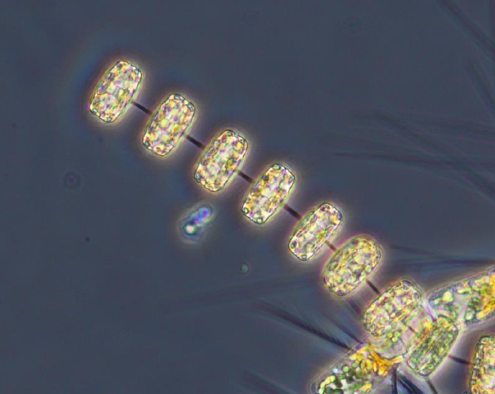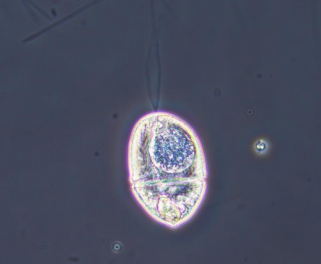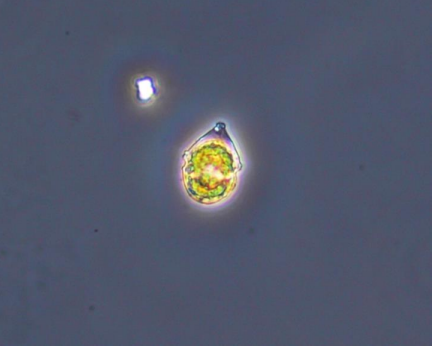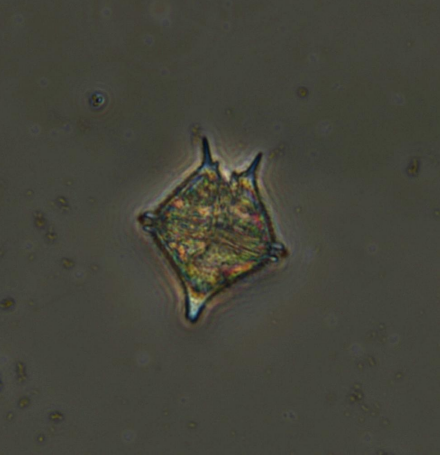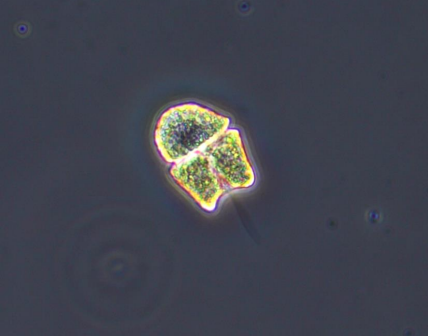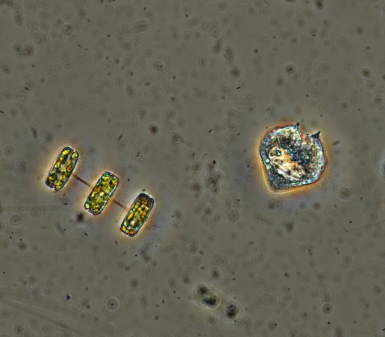October 15, 2025
Phytoplankton samples were collected on October 15, 2025 at Bullock’s Reach and analyzed in the laboratory shortly after collection.
It was sunny and windy on this day. The water temperature was 16.13 °C and the salinity was 26.53 psu.
The qualitative tow net sample had a short to moderate filtration time. The filtrate was light tan and contained some dark precipitates.
The analysis of the quantitative whole water sample revealed a total of 69,000 cells/L. The microflagellates were found at 30,000 cells/L. The most predominant phytoplankton genera were Chaetoceros spp. at 31,000 cells/L, Prorocentrum spp. at 3,000 cells/L, and pennate diatoms at 3,000 cells/L.
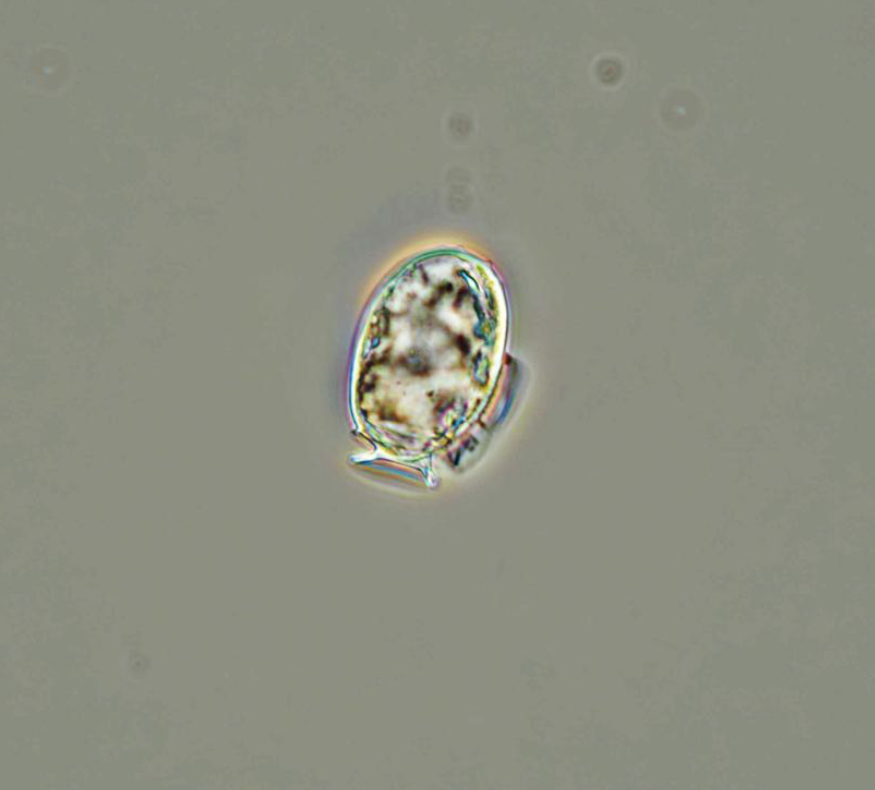
Dinophysis acuminata is a marine phytoplankton species of dinoflagellates that is found in the coastal waters of Rhode Island and north Atlantic waters. This is one of several phototrophic species that are classed as toxic, as they produce okadaic acid which can cause diarrhetic shellfish poisoning (DSP).

